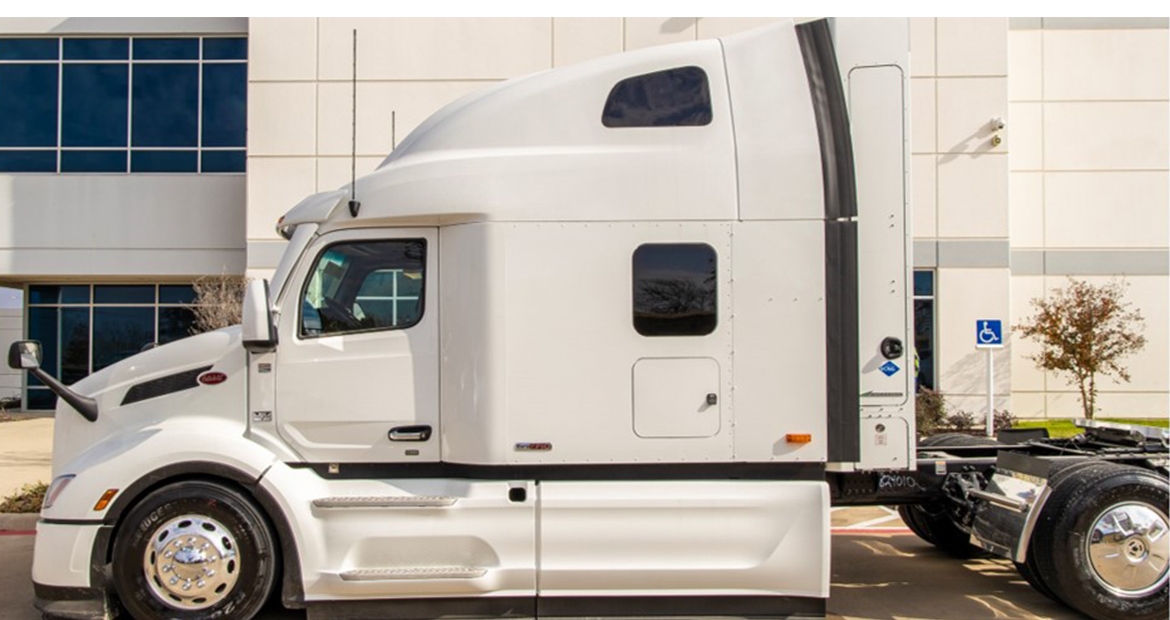Enhancing the experience of natural gas customers with Cummins Clean Fuel Technologies
By Puneet Singh Jhawar, General Manager – Global Spark Ignited Business

The energy transition in transportation is happening now. Businesses are under pressure to meet new regulations, environmental targets and public opinion. Fleets looking to act quickly to implement clean solutions are turning to compressed natural gas engines. They’re an increasingly popular choice for fleets looking to save money on fuel while improving air quality and reducing their total emissions footprint. Cummins Clean Fuel Technologies (CCFT) is helping to lead the way towards the adoption of near-zero emissions natural gas powertrains, manufacturing natural gas fuel delivery systems for commercial vehicles in North America.
An integrated natural gas vehicle system fueled and powered by Cummins
In early 2022, Cummins acquired 50% of Momentum Fuel Technologies, a Rush Enterprises company with a proven track record of manufacturing state-of-the-art complete Compressed Natural Gas (CNG) fuel systems. From this acquisition, Cummins Clean Fuel Technologies was born. The joint venture focuses on the development and production of near-zero emissions natural gas powertrains. This powertrain integrates Cummins natural gas engines with Cummins Clean Fuel Technologies tanks, fuel management system and software. Customers will have access to an extensive aftermarket support network consisting of Rush Truck Center’s dealerships and Cummins’ distributors. The combined support network represents over 250 locations in North America, providing access to a wide range of CNG vehicle parts.
How do fleets benefit from Cummins Clean Fuel Technologies?
- Innovative design and manufacturing based on customer feedback. Over 5,200 hours of conversations with customers led to improvements in the design, engineering and manufacturing of Cummins CNG fuel systems. They are light, durable and can be filled quickly. The system is designed to look good and be aerodynamic, further improving fuel efficiency of the vehicle their mounted on.
- Advanced safety features. Safety features for both drivers and technicians are engineered into the company’s products from the start. Natural gas is pressurized and flammable, so pressure relief devices that vent out fuel in an emergency are standard. Easy-to-use quarter turn valves are also included so it is clear whether they are open or closed. Color-coded high-pressure lines help technicians and drivers easily identify when a live channel is under pressure. Safety monitoring systems prevent engine startup if certain safety procedures have not been followed, so operating a CNG vehicle is easy and safe.
- Nationwide support network. Cummins Clean Fuel Technologies’ customers can rely on the largest support network in the industry. The CNG fuel systems are compatible with most models of commercial trucks and in-house technicians can be found strategically located across North America to fit them. Trained consultants can also help customers navigate the world of grants and incentives, allowing them to make a more cost-effective purchase. All of this allows customers to get on the road faster. However, support doesn’t stop at the point of sale. Aftersales support can be in the form of training, delivered by dedicated staff and available both in person and online.
Exclusive GreenLync® technology for fuel management and driver confidence
GreenLync 3.0 is an exclusive fuel management technology created with the operator in mind. In-dash messaging optimizes efficiency and aids in driver safety. Important features include live fuel pressure readings, temperature-compensated fuel level calculations to provide an accurate range estimation. These stats are displayed on an in-dash driver message display center. This gives drivers the information and therefore confidence they need to get on with the job.
New features launched with GreenLync 3.0 provide data to help technicians interpret onboard diagnostics to help reduce the occurrence of false trouble codes. The included fuel management system works with most telematic platforms, including Geotab and will allow remote monitoring usage. The software integrates with Cummins' engine allowing accurate monitoring and troubleshooting. Above all else, GreenLync 3.0 is designed with safety built in and will shut off the fuel supply if an accident has occurred.
An enhanced natural gas experience across many applications
Natural gas technology has already been adopted by many industries. For example, the waste management industry enjoys the standard benefits of CNG plus continuous access to biogas from organic waste. This biogas can be used to produce renewable natural gas (RNG). In the right situation, garbage trucks featuring a Cummins natural gas fuel system can run on RNG in an effectively carbon-negative manner. RNG can be used interchangeably with CNG or with a blend between the two fuels.
With Cummins Clean Fuel Technologies, several fuel system configurations are available including side mount, tailgate mount, roof mount and front-of-body systems. This flexibility means a solution has been engineered for the over-the-road, construction, port and beverage industries to name just a few. As an option for all industries, examples of natural gas vehicles can be found across North America and beyond.
Author Profiles

Puneet Singh Jhawar, General Manager – Global Spark Ignited Business
Puneet Singh Jhawar is the General Manager of the global natural gas business for Cummins Inc. In this role, he is responsible for the product vision, financial management and overall performance of the natural gas business. Over his 14-year career at Cummins, Jhawar has cultivated successful relationships with a number of Cummins' largest customers. Jhawar has extensive global experience, with roles based in the Middle East, India, Europe and the US.
Related Tags